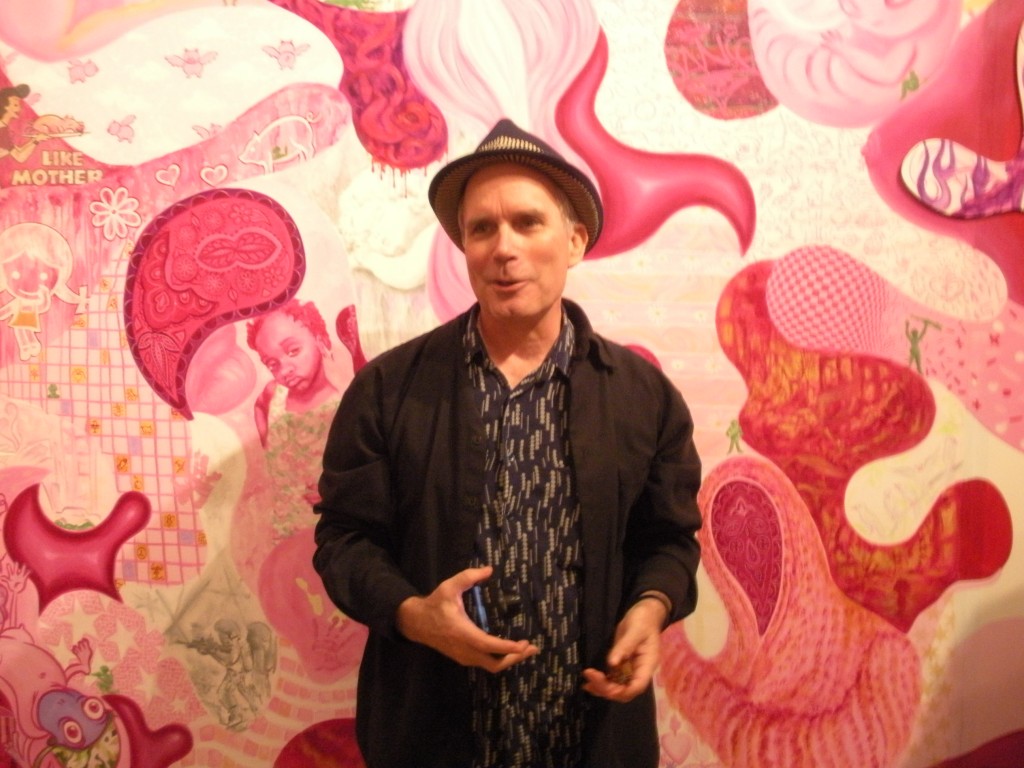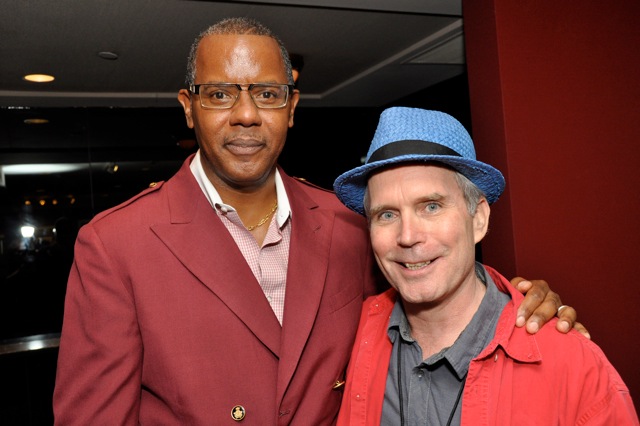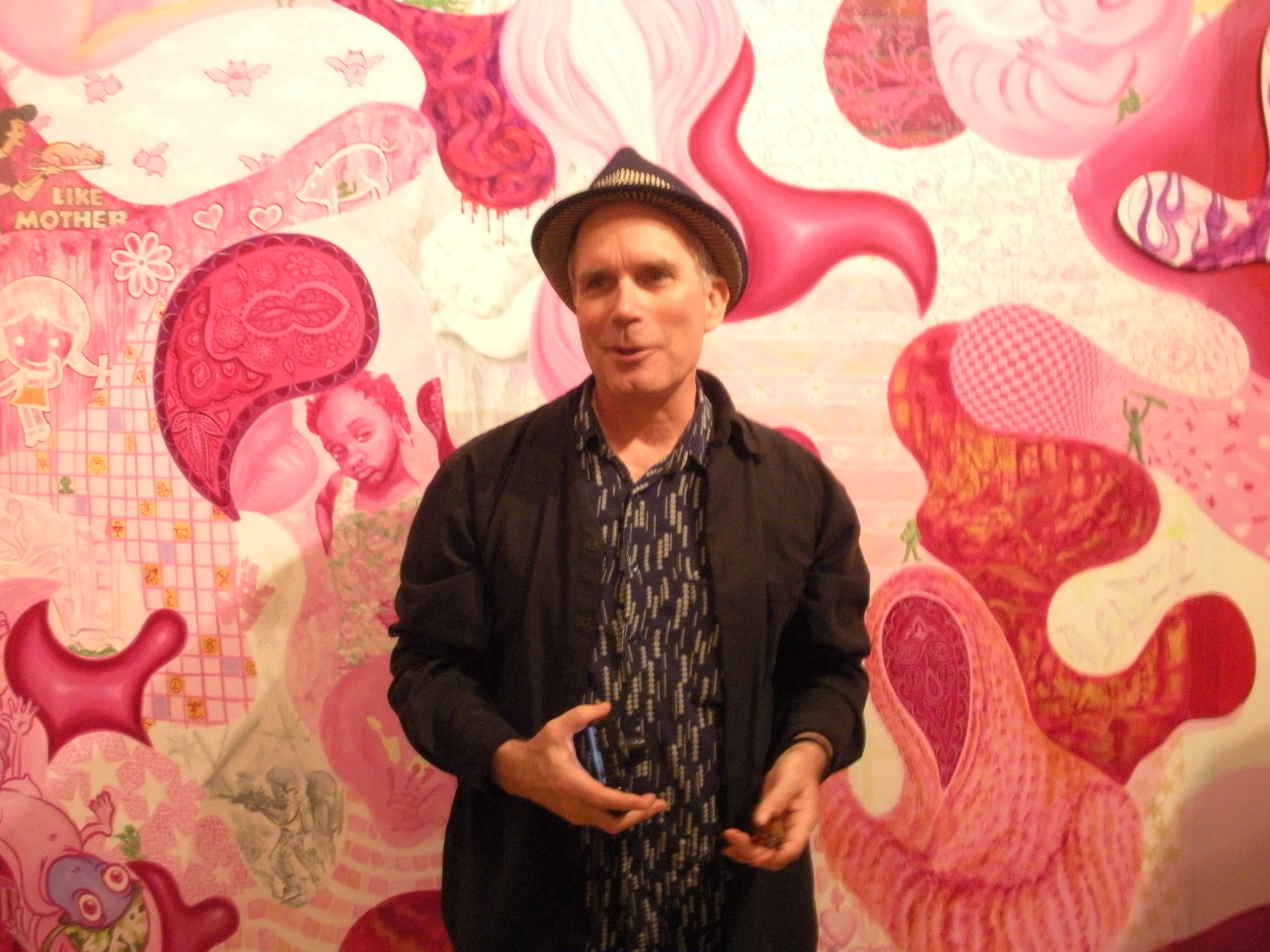
In our week of highlighting the film Jamel Shabazz Street Photographer, we highlighted the film at length HERE and interviewed Jamel Shabazz himself HERE. Rounding out our coverage of the documentary, which begins its theatrical run at BAM Rose Cinemas tomorrow, is an exclusive interview with the film’s director, Charlie Ahearn.
His name should sound very familiar to you as Ahearn is also the director of the first official hip-hop film, the all-around classic Wild Style (1982). He is also a dedicated artist, documentarian and writer with various other works highlighting the lives of different types of artists.
In the interview below, Ahearn highlights why he decided to do a full-length documentary about Jamel Shabazz, why he is so committed to his craft, and about this year’s 30th anniversary celebration and brand-spanking new release of Wild Style.
Curtis John: Why did you choose to do a documentary on Jamel Shabazz?
Charlie Ahearn: Well I saw [Back in the Days] and had an immediate intense connection it. Especially by the picture on the cover – how monumentalized [the young men] were by the photo and how they were represented with dignity, respect and style amongst the chaos of 42nd Street (Times Square). What I encountered throughout was that a moment of time was captured without the subjects knowing it, and this was a record of the moment in which you can tell he spent time with his subjects. I havd seen kids [photographed] like this, but Jamel turned the folk art aspect of this into an art form. I was committed to him as an artist. He wasn’t an easy person to get to know. Our relationship was one of patience…being open to him and his feelings, not pressuring him to do much, but working with him. He had been in environments in which there was a need for control – he had a rep out on the street but not a public reputation, but the book was giving him one. He was reticent about being public.
I first met Jamel when he was hired to photograph me for a magazine. As he was setting up the shot, talking to me and finding out more about [my documentaries on different artists], he somewhat seriously remarked that I should do a documentary about him. And I said, ‘Yeah, I should.”
I think his interest is in ‘monumentalizing’ his subject is key. We’re in a culture of lionizing the pathetic. People are proud that they’ve been in prison, been on drugs, etc. but his photos don’t exploit that but counter that. And he’s very aware of it. As KRS-One said in the film, you need to know something about the subject to see what’s in the photograph, so I tried to bring that out in the film.
So my interest was in the idea that this was a new kind of art form. I have a deep involvement with working with artists and art. One of the principals of art is limitation, which creates a valid art form. So as a filmmaker, I worked within these limitations and respected his limitations as a photographer. Jamel gained enormous trust through people, and though organizations like the Nation Of Islam, so to me it elevates the whole project beyond limitations of a group – it becomes a universal project that I respond to.
CJ: You and Jamel seem like kindred spirits as you both capture, as the Tony the barber says in the film, “life in its purest form.” In this case, street culture vis-à-vis hip-hop. Two questions in regard to this: Is capturing life in its purest form what this film means to you? If not, then specifically what? And is this film in some fashion an accompaniment to Wild Style?
CA: [Jamel and I] come from different worlds but on a certain level our relationship is not reciprocal. I focus on and respect his work, but it’s not reciprocal, but in my mind I feel that I understand him as an insider/outsider in that culture.
Jamel can work with people without sharing their interests or problems. For example, in the film Kevin talks about when [he and Jamel] were both younger and at a dice game. Jamel would not gamble but was there. I felt that was me. Being conscious, giving respect, but not being a part of it. It’s that age-old dilemma about being a person documenting that culture but to one extent you’re just a fly on the wall. My guide was in showing a reflection of who [Jamel] was and what he photographed. That’s what I showed and focused on whether we were out at the Veterans Day Parade or when we were on the corner. It was a way to learn about his photography and about him.
We spent ten years on this film and I was waiting for certain things. We ‘d talk on the phone for at least thirty minutes quite regularly about different things including what he wanted to do with his life; I’d listen to hear what he was trying to project. Jamel at times spoke about trying to have a great photographer’s career, and one day I had to tell him: “You’re already a great photographer.” While the titles of his books are retrospective, the other side is to show he’s about something today and something new. I respect him as an artist and in making something that’s aligned with that.
As for [the connection] to Wild Style, [the artist and star of that film] Lee Quinones had a drive to be famous but not allow anyone to really know who he was. So I respected him to be his character, but not do any publicity so he can be himself. In Wild Syle I made up nothing, I let things with the characters and the story let them happen as they were. It was left as it was. So it connects with Wild Style as it’s an understanding of how respect works on the street – you understand your limitations and know there is a time to keep quiet and a time to talk.

credit: David Godlis
CJ: What made you want to be a filmmaker, and in particular a documentarian?
CA: I didn’t start out wanting to be either. I got attracted to film in the [1970’s] when people of my generation dropped out of the art world. People went more into performance and video. I wanted us to challenge ourselves with a new subject and audience for film art – which was really challenging. So I made the [street-based] kung-fu film The Deadly Art of Survival. Watching that movie with people in the [housing] projects in the Bronx in the late 70’s was my film school. I paid attention to what they focused on, what they laughed at, and found interesting. I learned to keep on the subject and keep it on the creativity and the feeling and not fictionalizing things. I focused less on lighting and making it about the real thing. I found it fascinating.
[In Street Photographer] when we went to the park and spoke to Kevin, people slowed down as they were driving by as they saw the book. [Though] uninvited, they wanted to make statements about this picture and that one, which I found fascinating. It was about the genuine effect that art can have on people, which worked on many levels including a reflection on their childhood. I wanted to find that other doorway. Once you’re there that happens but it took a long time to develop that.
CJ: What other films inspired you?
CA: In the ‘70’s it was the kung-fu movies at 42nd Street or Chinatown, which I thought of as art movies. I think the audience also felt that. When I touched on hip-hop, I saw their connections in different forms. Like the life in the kung-fu movies, hip-hop is a battle culture. They just express themselves on different levels. Hip-hop is also abstract and avant-garde: what is happening to the sound in scratching and in break dancing is the elevation of formal units. It’s an elevation of the form, graffiti too, to a higher level. “My style can defeat yours,” the formal elements in competition.
CJ: I love that Wild Style is getting a new Blu-Ray and DVD release in October. Is there anything else special planned for the film’s 30th anniversary?
CA: Well on August 26th in Central Park is the 30th anniversary reunion with all the original performers: Fab 5 Freddy, The Cold Crush Brothers, Busy Bee, Grand Wizard Theordore, and more. It’s a restaging of the 20th anniversary and a telescoping of milestones into a formal event. And with the anniversary is a brand-new version that’s re-colorized, which I’m really proud of.
Additional links:
- Info about the film’s BAM run
- Charlie Ahearn’s website
- Jamel Shazz Street Photographer trailer
- Jamel Shabazz official


